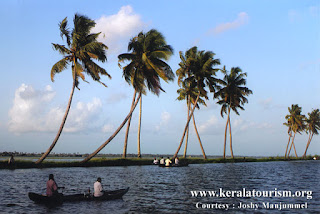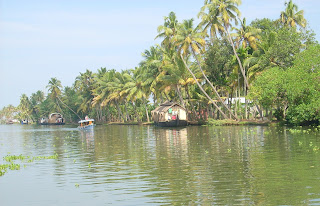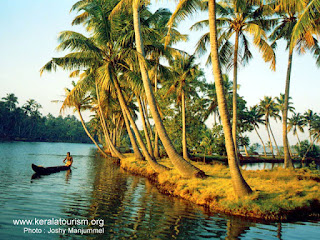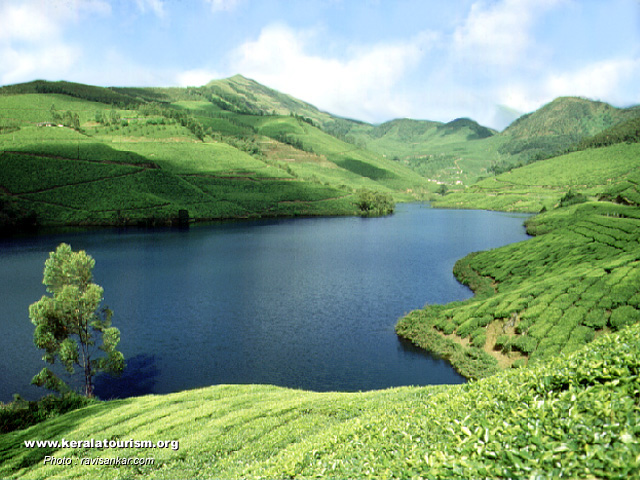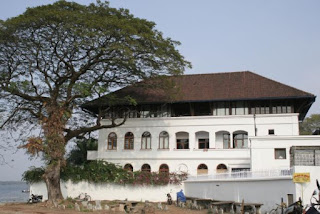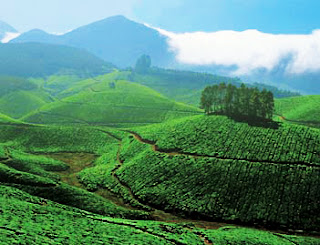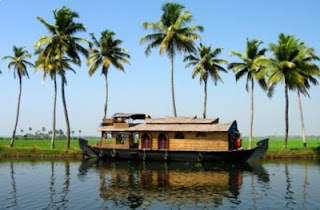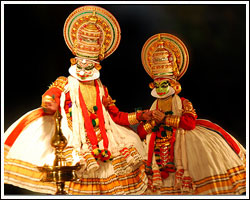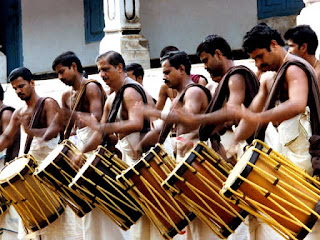kuttanaad
 It is the major rice granary of Kerala, where vast stretches of verdant paddy fields are interlaced with enchanting backwaters create some of the unforgettable sights.
It is the major rice granary of Kerala, where vast stretches of verdant paddy fields are interlaced with enchanting backwaters create some of the unforgettable sights.Kuttanad, the rice bowl of Kerala is all about an agrarian community, striking a chord of harmony with its physical setting. Noted for its farming below sea level (about 4 to 10 feet) the land of Kuttanad possesses a socio-cultural fabric of its own. Four major rivers in Kerala viz. Pampa, Meenachil, Achankovil and Manimala flow into the region.
Kuttanad can be accessed from places on the National Highway- 47 from Harippad to Alappuzha town in the District of Alappuzha, and from places like Thiruvalla and Changanasserry on the Main Central (MC) Road going through the District of Kottayam.
The most popular route taken to get close and explore Kuttanad is the Alappuzha-Changanasserry road. This road goes through the heart of Kuttanad and gives visitors plenty of options to watch the day-to-day life at Kuttanad. The best thing for a visitor to Kuttanad is that, one can take deviations from either side of the Alappuzha-Chanaganasserry road to reach villages, predominantly consisting of farmers. During the harvest season the vast expanse of paddy fields, at some places dotted with islets of coconut trees, will be busy with farmers engrossed in different farming activities;done in the traditional manner. Quite early in the morning itself one can sight the women folk heading towards the paddy fields carrying their lunch box and sickle, and on the other hand men could be seen already on the fields till the land, sowing the seeds, getting rid of weeds, diverting water channels etc.
The Kuttanad area is also rich in avian population, and one can easily find flocks of parrots hovering in the paddy fields, especially those fields with rice stalks in bloom. You may also come across a black blanket sweeping across the sky, which on close look will reveal as yet another flock of birds. And this time its is the darter birds, which haunt the backwaters in and around Kuttanad and the adjoiningVembanad Lake.
As you explore the villages, don't forget to take a walk by the numerous canals that crisscross Kuttanad, which are lined by tall coconut trees swaying in the breeze. During most part of the day, these canal stretches would be abuzz with different activities. There will be vendors on boat selling vegetables, grocery and fish to households on the banks of these canals. You would also come across big country boats called Kettu Vallams on which goods like coconut husk, rice grains etc. are transported to nearby markets in bulk. Among the sights on the backwaters here at Kuttanad, the most fascinating obviously is that of the ducks, quacking together in high decibels and moving across the backwaters in large numbers;shepherded by men on small boats. One can also catch men plying on the backwater;some diving down to collect lime shells from the depths and others fishing with their nets and traditional cane basket called Ottal.
For those interested in trying out few local dishes may do so by dropping at the small traditionally built wayside eateries, which are quite famous for backwater fish delicacies and tapioca. A popular naturally extracted beverage is the toddy, which is available in plenty and enjoyed by many for its speciality.
You may also find Kuttanad, a bit more exciting, if you hire a boat. You can hire motorboats, houseboats etc. from the boat jetty operated by the government as well as private groups near the KSRTC Bus Station at Alappuzha or else may get on one from places like Kidangara, which is on the Alappuzha-Changanasserry road. Some of the places worth visiting in the Kuttanad area are Nedumudy, Kaavalam, Champakkulam etc.
Getting there:
Nearest railway station: Alappuzha.
Nearest airport: Cochin International Airport, Nedumbassery, about 85 km from Alappuzha
Nearest airport: Cochin International Airport, Nedumbassery, about 85 km from Alappuzha
